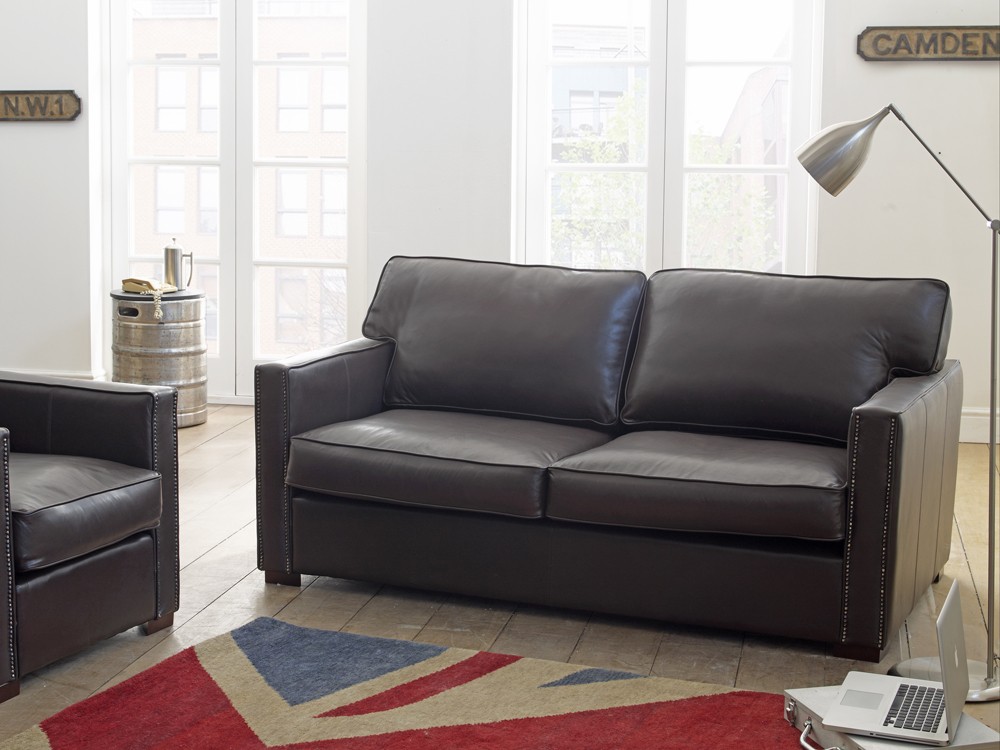
The things to consider if your thinking about making your own sofa…
Now before we begin I must explain this isn’t for everyone, a number of different skills are needed and these vary by the choice of sofa as explained below.
- Part 1. Choose a style of Sofa
A vintage leather sofa (a traditional chesterfield sofa) requires a buttoning technique known as deep buttoning and can be considered advanced upholstery for even skilled upholsterers. This skill is primarily a trait that has been mastered by many Northern Furniture Manufacturers partly due to the North of England being the primary location and home of the industrial revolution and historically a centre for the UK textiles movement of generations past. Whilst grand in nature the Chesterfield sofa is a pinnacle skill to master for experienced upholsterers, so for the beginner a simple ‘boxy’ or compact sofa is a better starting point for beginners.
- Part 2. Choose a Material
The choice of material i.e. leather or fabric will impact on the way the sofa is cut, sewn and upholstered, with each stage requiring unique skills applied to the choice of material used. The difference in production affects the amount of material needed, and this can be dramatically increased or reduced with experience. Cutting yields on leather can affect the cost of production by up to 25%. An experienced leather cutter must work around natural hide variations, scars and marks, whilst minimising waste from the irregular shapes of the hides. Some large manufacturers use a computerised cutting machine, but we believe the only way to cut a real leather sofa is by hand.
Different constraints affect a fabric cutter. It is suggested that if you are learning how to cut fabric you should start with a decent weight fabric and with a width of approx. 140cm. A large area to roll out the cloth is required, and patterns for the furniture should be worked into the roll, again in efforts to minimise waste. A plain fabric whilst easier to use than a patterned fabric (no pattern match) will still need to be cut appropriately with considerations to the direction of the pile. The pile is often referred to as the direction of the fabric, and should be consistent. To find the direction of the pile of the fabric run your hand over the cover and then reverse the direction. By brushing the pile, you will see a change in colour. If you do not identify the pile and cut in any direction turning the fabric to fit in the sofa patters when fabric pieces are sown together with the piles in different directions, shading will occur. This is more obvious especially with of a heavy pile as the effect and result is the creation of a multi shaded piece of furniture.
To cut leather by hand you will require a sharp knife and for a fabric sofa a good pair of scissors will do the trick.
- Part 3. Choose your stitch preference.
Not only is there differences in how the material is cut, but also the way the material is sewn also differs as leather is often twinned or double stitched requiring a unique sewing machine known as a twinner (twin needle). Fabric sofas can be twinned but are more commonly made with a top stitch or standard stitch more akin to the finish you would expect to see on a well made pair of curtains.
- Part 4. The Frame
Now the one common factor in the manufacture of any type of sofa is the frame of the sofa, which is the heart of a good piece of furniture. The English Sofa Company is a UK sofa manufacturer with the luxury of a frame making facility on site. Based in Manchester our wooden frames are made from beech hardwood which is used for all main supporting rails, and birch ply wood for none load bearing areas. This type of frame construction is excellent but far from common in sofa manufacturing, with many companies choosing to use chip wood and / or mdf due to cost considerations. A good frame is both screwed and glued for added strength, corner blocks used to re-enforce all load bearing areas, dowelling is another good technique in frame manufacturer. A metal zig zag spring is then used to connect front and back seat rails. Again this is not typical, elastic webbing is a cheaper alternative that is often used by Chinese manufactured sofas or imported sofas. Another springing base system that carries a rather unusual name is a pocket sprung edge, or “Fishmouth Sprung” as it is sometimes known. This but this is only used by some of the UK’s tops manufacturers including us – The English Sofa Company. The Fish mouth spring is named because of it’s unfortunate resemblance to it’s name sake. Not only is the base of the seat sprung, but the front edge of the sofa which is normally firm is sprung which makes for an extremely comfortable sitting experience, which opens and close like the mouth of a fish !
- Part 5. Boring but Required – The Compliance
Joking aside – Compliance with UK regulations is extremely important. Some serious consequences have occurred in recently years when retailers and overseas manufacturers neglect their basic responsibilities to public welfare and health.
- Toxic Chemicals
“When the sofas went into people’s homes the solid sachets turned into gas that burned through clothes and on to skin.”
Three retailer – Argos, Land of Leather and Walmsleys have all admitted liability for the use of the highly dangerous chemical that Burned through clothes and skin, up to 100,000 of the sofas were sold with “highly sensitising” fungicidal chemical dimethyl fumarate (DMF) inside. The substance was designed to stop the furniture, manufactured by Chinese companies Linkwise and Eurosofa, going mouldy in storage. If the lead time for delivery of your sofa is over 8 weeks it could suggest that the sofa is being imported into the UK. Storage and shipment times of this nature are the reason this chemical was introduced by overseas manufacturers, and if buying a sofa, consumers should ask the question, is DMF used in your packaging. Further information available from the BBC website
- Fire Regulations
As recently as in October 2011 Trading Standard Officials seized hundreds of sofa from a midlands warehouse, with potentially life threatening leather sofas were bound for midland sofa retailers and showroom. Reported by the Birmingham Post.
The UK has one of the toughest regulations when it comes to fire prevention and strict guidelines help to save lives in millions of UK home every year.
The English Sofa Company works with UK fabric suppliers who are part of the strict regulations, and also work closely with it’s UK hide suppliers ensuring only quality safe products are kept. Fire certifications of all materials are available for public record from their Manchester manufacturing base, as should be the case from reputable UK manufacturers.
- Commercial Furniture – Fire Requirements
Now just to complicate things a little further, if your looking to make a sofa for use if your restaurant, hotel or bar / pub, then there is the UK fire regs to consider. All furniture used in an commercial environment must be manufactured to Crib 5 fire standards otherwise you may not be able to use the furniture in public environments. Crib 5 is an enhanced standard, testing to more extreme circumstances than the UK domestic tests. To ensure your sofa complies to crib 5 you can review FIRA, (furniture industries research association) who will test your furniture for you. The action of testing involves setting a burning crib on top of the sofa and timing the burn time to ensure it meets regulations. As a result you will need to make another sofa ! If that sounds a bit extreme The English Sofa Company can manufacture crib 5 sofas, which have already been tested and comply with the regulations and you’ll only need to buy one – which is a relief. You can obtain information on hotel furniture and restaurant furniture from our partner Forest Contract or via the BCFA (British Contract Furnishings Association).
If there is just too much to consider making your own sofa and you would like The English Sofa Company to help with deciding what sofa style, design, stitch or frame type would be most suitable for your requirements contact a member of the team who will be happy to help.
The English Sofa Company – UK Sofa Manufacturer




